
MTR100: Underwater Cameras, Lights and Ocean Landers
on a circuit board, providing an integrated, small volume design. You’ll find a variety of choices, including resolution, auto-exposure, sensitivity, frame rate, video output, color/black-and-white, and others. Some are specifically made to interface with Arduino, Raspberry Pie, or other programmable boards. Prices vary, but start as low as $6. Many have the CMOS imager dead center on a square mother board, perfect for fitting into a cylinder. A shallow water housing can be as simple as a PVC cap with a flat acrylic viewport bonded to the front as often seen in the MATE ROV contest.A
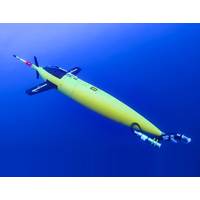
New Tech Frontiers for Ocean Gliders
we were on so could time stamp the data and had good corroboration. We could also see machinery start up noise (in the data). In parallel, we developed signal processing, as part of a three-year knowledge transfer partnership with the University of Bath, using a low power, low footprint FPGA (field programmable gate array) to process data in real time.”They then looked at the initial four hydrophones and processed the data to beam form and get three beams – forward, aft and broadside, to get automated detections – proving this capability. The idea is that information is then sent to
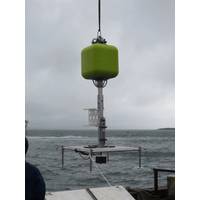
Lander Lab #4: Underwater Releases
, the system has accumulated tens of thousands of release cycles.Figure 13. Featuring the fastest release of any release system, DesertStar’s ACR-1 opens in under a 1/10 sec. (Photo Desert Star Systems)One can imagine the combination of a flash wire release, pressure sensor, and programmable controller for bottle closure that would allow the collection of water samples at precise depths by a free-ascending lander, now a profiling vehicle. A series of CTD casts could occur quickly with a small number of untethered free ascent rosettes.PressureThe trigger is pressure. This
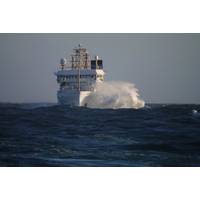
Vestdavit Inks Deal for Davit Systems for NOAA RV Newbuilds
in different marine environments across the globe spanning shallow coastal and continental shelf waters to deep ocean conditions.The davit system incorporates motion compensation and safety features such as independent dual winches with independent constant tension, shock absorbers, guide arms and a Programmable Logic Controller (PLC) for digital remote control.Independent dual winches can operate separately or synchronized, and each winch can independently provide constant tension, which is “a really advantageous feature when recovering boats in really rough weather”, according to Oding.Shock
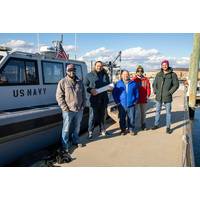
Bionet Sonar Tests Underwater Wireless Network at NUWC Division Newport
Naval Undersea Warfare Center (NUWC) Division Newport recently assisted Massachusetts-based small business Bionet Sonar by underwater testing its new wireless technology called HydroNet at the Narragansett Bay Test Facility for two days in February.HydroNet is an open, modular and programmable underwater modem that powers an autonomous wireless communications system bringing the internet underwater and empowering the network with artificial intelligence-driven, software-defined technologies.Its plug-and-play capability with remotely operated vehicles (ROVs), autonomous underwater vehicles (AUVs)
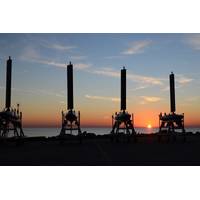
Autonomy: Sun, Sail & Subsea – Not a Holiday, but a Hybrid UxV Platform
think about the enormous amount of software and autonomy that’s required to have all these different systems work together and communicate back and forth with each other.” The work that’s been done in this space means Triton can run missions based on pre-programmed waypoints, with programmable parameters such as exclusion zones, with the vehicle using algorithms developed by the company to determine the fastest route to those waypoints. Jordon Cousino, Chief Commercial Officer, at Ocean Aero, adds that, while there’s a payload eco-system for uncrewed surface vessels (USVs)
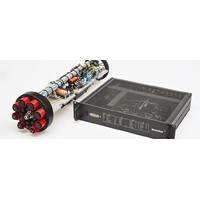
MacArtney Launches NEXUS 8 Multiplexer
multibeam sonar multiplexer, with ultra-high bandwidth and three full HD video interfaces for up to three HD cameras, able to provide real-time monitoring without any latency, and to run instruments and sensors for measurement, surveys, sonar, manipulation and control.The NEXUS 8 features intelligent programmable eFuses for dynamic performance and to save space. eFuses are ideal for subsea systems, offering flexible, dynamic programming and avoiding time-consuming and expensive recovery operations for minor repairs
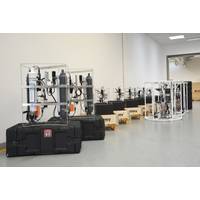
MacArtney supplies a 12-unit turnkey solution for the Danish EPA
CTD is one of the most commonly used tools in an oceanographer's armory, providing detailed profile and time-series data on the measured parameters of conductivity, temperature and depth. Today's digital sampling techniques ensure a high level of accuracy, and the sample bottles are programmable for specific depths and intervals.Each of the 12 units in MacArtney's solution presents marine scientists with real-time data and data logging. Any collected water specimens can be verified on-site or in laboratories later.Full scope of supplyThe supply scope includes seven units with one

DLM Delivers Monitoring Systems for Offshore Wind Farm Cables
or reduce inefficiency.Subsea asked DLM to devise a method to monitor forces on the cables and the movement they experience over time; log the data over the course of a year; and make it periodically accessible. The system comprises three dual-axis shear pin load cells, two accelerometers, and a programmable logic controller (PLC). The shear pin load cells are dual-axis shear pins that measure forces across two planes in the positive and negative directions. The working load limit (WLL) of each plane is 50kN, in both the positive and negative direction.Mike Brend, project manager at Subsea Innovation



 February 2024
February 2024





